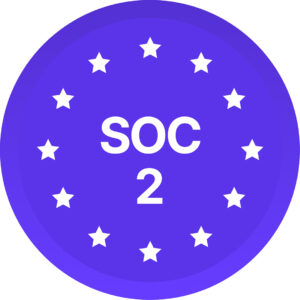Your work environment communicates with employees every day through physical space, policies, routines, and cultural habits. These signals shape who feels comfortable, who feels visible, and who must constantly adjust to fit in.
The question is: what is your workplace saying?
Environmental microaggressions are the subtle cues your workplace gives about who belongs and who does not. They appear in photos on your walls, events on your calendar, furnishings in your office, and the language on your meeting room signs. Most leaders do not see them. Your employees do. These signals shape whether they feel like they belong or feel like they are adapting to fit a culture that was not built with them in mind.
Key takeaways:
- Environmental microaggressions are built into physical space, policies, and habits
- These signals carry measurable costs such as higher stress and increased turnover risk
- Strong belonging increases job performance by more than half and reduces turnover
- Leaders can audit space, accessibility, language, recognition, and policy design
- Accommodation should be built into standard procedures, not requested repeatedly
What are environmental microaggressions
Environmental microaggressions are signals embedded in your workplace that communicate who is included.
Microaggressions of the environment are the subtle, and sometimes not so subtle, cues your workplace gives about who belongs. They appear in the photos on your walls, the events on your calendar, the furnishings in your office, and the language on your meeting room signs.
Unlike interpersonal microaggressions, environmental ones are built into the fabric of your workplace. They are physical, policy-based, and institutional elements that make it harder for some people to belong. Researchers call them “macroscopic or institutional manifestations” of bias. The everyday snubs, slights, or exclusions baked into spaces rather than individual interactions.
What makes them more damaging is that most are not conscious. Nobody designs an office thinking the space should feel unwelcoming. Yet the impact remains. If your office consistently reflects one type of person, others notice. Over time, these signals deliver a clear message: this place was not designed for you.
Where the signals appear and what they communicate
Environmental microaggressions show up in space, language, and policy, and each category communicates who is centered.
Physical space
Walk through your office as if you are using a wheelchair. Can you reach the bathroom easily? Is there a desk setup that accommodates different physical needs, or do employees need to request adjustments and wait weeks for them?
Accessibility signals whether people can work without navigating barriers others never face. The same applies to parents needing lactation rooms, employees needing prayer spaces, or people with sensory needs requiring quiet areas. When these spaces are missing or difficult to access, you signal that certain needs were not considered.
What’s on your walls matters too. If every leadership photo, award display, or inspirational poster features the same demographic, you tell a narrow story of who succeeds here.
This extends to digital environments. Your website, LinkedIn page, and internal templates all communicate who you value. Representation is about someone seeing themselves reflected in the space.
Language and cultural assumptions
Language reveals cultural defaults.
Meeting rooms named after great leaders (all men). Company communications that default to “he” or “guys.” Holiday parties scheduled around Christian holidays without acknowledging others. Casual references to “normal family situations” that assume everyone has a nuclear family structure.
These signals are not catastrophic, but their repetition creates daily reminders that the baseline assumptions do not include everyone. This creates fatigue, especially for those who feel they must translate or adjust constantly in spaces that feel effortless for others.
Policies and workplace norms
Policies may appear neutral yet reflect the routines of a specific group.
“Casual Friday” sounds harmless until you realize it creates anxiety for employees whose religious or cultural attire doesn’t fit the implied definition of “casual.” Lunch-and-learns scheduled during times that conflict with prayer. Social events that assume everyone drinks alcohol or can afford to attend after-hours gatherings.
Even flexibility policies can contain hidden bias. “Work from anywhere” sounds inclusive until remote employees in different time zones are expected to join meetings at 6 AM their time, or “core hours” align perfectly with one timezone and exclude others.
These workplace policies reflect whose life circumstances were considered when they were designed, and whose weren’t.
Recognition and visibility matter too. Check your employee recognition wall or internal communications. Who’s featured? Who gets highlighted in success stories? If leadership spotlights, awards, and visibility consistently go to one type of employee, that tells everyone else exactly where the ceiling is.
Wellness benefits tell the same story. A program centered on gym memberships but lacking caregiving support or mental health resources communicates whose wellbeing shaped the design.
Why do environmental microaggressions matter for performance
Environmental microaggressions shape belonging, and belonging directly influences performance, participation, and retention.
Environmental microaggressions rarely generate formal complaints. Instead, employees disengage quietly. They speak less in meetings, avoid opportunities, or exit the organization entirely.
Belonging has a measurable impact. Research from BetterUp found that workplace belonging leads to a 56% increase in job performance and a 50% reduction in turnover risk. When employees feel they belong, companies see substantial bottom-line benefits.
Belonging is not limited to interpersonal interactions. It depends on whether the environment signals that someone is welcome.
Research also shows that “women’s underrepresentation in leadership not only affects their access to advancement opportunities but also signals to others that leadership is incongruent with their gender, leading to feelings of exclusion and disengagement” (Sun et al., 2025).
You can have the most diverse workforce in your industry, but if your workplace environment constantly signals that some employees are outsiders, retention numbers will reveal the gap.
What leaders can do differently
Leaders can reduce environmental microaggressions by auditing space, updating policies, and normalizing accommodation.
Audit your environment with fresh eyes
Walk through your workplace, both physical and digital, as if you are seeing it for the first time. Better yet, ask employees to share what they notice. Where do they see themselves represented? Where do they feel invisible?
Look at:
- Wall art, photos, and decor
- Meeting room names and common language
- Accessibility features and available spaces
- Default calendar holidays and event timing
- Recognition boards and award criteria
- Dress codes and unwritten norms
Involve employees in redesign
Do not assume you already know what people need. Employees experiencing environmental microaggressions are the experts. Use focus groups, surveys, and discussions to understand what changes would make the greatest difference.
Make changes visible and intentional
When you update policies or redesign spaces, communicate why. “We’ve added prayer rooms and clearly marked them on our floor plan because we want to ensure employees of all faiths feel supported here.” This signals that workplace inclusion is a priority, not an afterthought.
Review policies for hidden bias
Examine your workplace policies through multiple lenses:
- Do dress codes accommodate religious and cultural attire?
- Are events scheduled with diverse religious and caregiving obligations in mind?
- Do flexibility policies truly work for employees across timezones and life circumstances?
- Are accommodations processes easy to navigate, or do they require employees to constantly self-advocate?
Normalize accommodation
Stop treating accessibility and inclusion needs as special requests. Build them into your standard operating procedures. Default to accessible design. Offer captions automatically. Include dietary restrictions in every event planning checklist. When accommodation is built in rather than opt-in, you remove the burden from employees to ask for what they need.
The core test
Here’s how you know if your environment passes the inclusion test: Can someone show up as themselves and navigate your workplace without adapting to fit someone else’s baseline?
If the answer is no, your environment is creating friction that doesn’t need to exist. That friction costs you engagement, retention, and innovation. People spend energy managing microaggressions instead of contributing their best work.
Environmental microaggressions are not about perfection. They are about designing spaces that recognize different needs and avoid disadvantaging anyone by default.
Your office is already communicating something. The question is whether you are ready to hear it and act on it.
Take action on environmental microaggressions
Diversio helps companies identify and address environmental microaggressions through data-driven insights and AI-powered recommendations. Schedule a demo to see how we measure, analyze, and improve workplace inclusion.
Resources for building inclusive environments:

